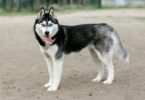Imagine welcoming a furry companion into your home—one that combines playful energy with a gentle, loving spirit. For many families, finding the perfect pet means balancing traits like adaptability, low maintenance, and a personality that fits seamlessly into daily life. This is where hybrid breeds shine, offering the best of both worlds.
The Cavalier King Charles Spaniel Poodle mix, often called a Cavapoo, blends the affectionate nature of its Spaniel lineage with the intelligence of the Poodle. These designer dogs are known for their soft, wavy coats that shed minimally, making them a practical choice for allergy-prone households. Their size typically ranges from 10 to 20 pounds, ideal for apartments or homes with limited space.
Families gravitate toward Cavapoo puppies for their adaptable temperament. They thrive on human interaction and adapt well to households with children or other pets. Whether you’re a first-time owner or expanding your furry family, understanding their needs is key to a happy partnership.
This guide covers everything from health considerations to grooming routines and training strategies. You’ll learn how to nurture their social nature, maintain their hypoallergenic coat, and create an environment where they can flourish. Let’s explore what makes these puppies a beloved choice for pet lovers nationwide.
Getting to Know Cavalier King Charles Spaniel Poodle Mix Puppies
Blending the warmth of a companion breed with the sharpness of a working dog, this hybrid brings joy to homes seeking both brains and affection. Their adaptable nature shines in diverse lifestyles, from bustling family households to quiet urban apartments.
What to Expect from This Unique Hybrid
These pups inherit the best qualities from both parent lines. The best Poodle mixes often showcase hypoallergenic coats, and this cross is no exception. Their wavy fur sheds minimally, reducing allergy triggers while requiring weekly brushing.
Daily needs include 30-45 minutes of playtime paired with mental challenges like puzzle toys. Their intelligence stems from Poodle ancestry, making training sessions both effective and engaging. Socialization from puppyhood ensures they remain friendly toward strangers and pets.
An Overview for Modern Pet Owners
Compact size (12-18 lbs) makes them ideal for smaller homes. Unlike larger breeds, they don’t need sprawling yards—a brisk walk or indoor fetch session keeps them content. Their gentle demeanor aligns well with children, though supervision with toddlers is advised.
Health-wise, responsible breeders screen for eye conditions and joint issues common in both parent breeds. Prospective owners should budget for routine vet checks and quality nutrition to support their active metabolism.
History and Background of the Breed
The rise of designer dogs began in the late 20th century as breeders sought to combine beloved traits from purebred lines. This cross gained momentum in the 1990s, appealing to urban families wanting compact companions with predictable temperaments.
Development and Popularity in the Doodle Scene
Doodles exploded in popularity after the Labradoodle’s 1980s debut. Breeders later experimented with smaller varieties, pairing toy Poodles with affectionate companion breeds. Their low-shedding coats and friendly personalities made them instant favorites in allergy-conscious households.
Social media accelerated their status as “designer pets,” with influencers showcasing their photogenic curls. Today, they rank among the top hybrid choices for city dwellers and suburban families alike.
Parent Breed Contributions and Traits
The Poodle lineage introduced sharp intelligence and hypoallergenic fur textures. Meanwhile, the King Charles ancestry provided a calm, people-oriented disposition ideal for therapy work.
Health considerations stem from both sides. Responsible breeding minimizes risks like mitral valve disease (common in smaller breeds) and hip dysplasia. Early genetic testing helps ensure robust litters, prioritizing longevity over aesthetics.
Modern standards now emphasize temperament consistency alongside coat quality. This evolution reflects growing demand for pets that adapt seamlessly to dynamic lifestyles.
Breed Characteristics and Temperament
When choosing a four-legged family member, traits like size and temperament take center stage. These hybrids excel in both categories, offering a balanced blend of physical and behavioral qualities suited for diverse households.
Size, Coat, and Physical Features
Weighing between 10 to 20 pounds, these dogs boast a compact frame ideal for apartment living. Their soft, wavy coats vary from loose curls to straighter textures, often inheriting low-shedding properties. Expressive eyes and a cheerful demeanor make them instantly recognizable companions.
Family-Friendly Nature and Adaptability
Their adaptable personality shines in homes with children or multiple pets. Early socialization helps them develop patience and confidence, traits that vets often highlight as crucial for harmonious family dynamics. These dogs thrive on interactive play but equally enjoy quiet moments curled up beside their owners.
Moderate energy levels mean they’re content with daily walks and indoor games. Regular vet visits help address common concerns like ear infections, ensuring long-term health. Whether in bustling cities or suburban neighborhoods, their versatility makes them cherished members of any household.
Spotlight on cavalier king charles spaniel poodle mix puppies
When selecting a hybrid companion, certain standout features make this crossbreed a top choice. Their blend of physical charm and adaptable behavior creates a versatile pet suited for diverse lifestyles. Let’s explore what makes them unique.
Distinctive Physical and Behavioral Traits
These hybrids often inherit a soft, wavy coat that sheds minimally—ideal for allergy sufferers. Coat textures vary, leaning toward the Poodle’s curls or the Spaniel’s silkier waves. Regular brushing maintains their hypoallergenic qualities while reducing matting.
Size ranges depend on parent genetics. Most weigh 12-18 pounds, fitting comfortably in apartments or houses. Their compact frame combines the Spaniel’s sturdy build with the Poodle’s elegant proportions.
Behaviorally, they balance intelligence with a calm demeanor. Early socialization nurtures their natural friendliness toward people and pets. Puzzle toys or obedience games engage their sharp minds, preventing boredom.
These traits make them adaptable to urban or suburban homes. They thrive in active households but also adjust to quieter routines. Whether in small spaces or sprawling yards, their versatility shines through.
Health and Wellness Considerations
A proactive approach to health ensures these hybrids thrive for years alongside their families. While generally robust, they inherit certain genetic risks from both parent breeds. Awareness and early action can significantly improve their quality of life.
Common Health Issues and Screening Tips
Hip dysplasia and patellar luxation rank among the most frequent concerns. These joint issues often stem from the parents’ genetic history. Regular vet visits during puppyhood help catch abnormalities early through physical exams or X-rays.
Heart conditions like mitral valve disease, common in smaller breeds, also require monitoring. Families should prioritize breeders who test parent dogs for congenital problems. Annual check-ups become crucial as pets age, especially for those over seven years.
Managing Conditions Like Hip Dysplasia
Maintaining a healthy weight reduces stress on joints. Low-impact exercises like swimming or short walks help manage symptoms. Your vet may recommend joint supplements or anti-inflammatory medications in severe cases.
Watch for signs like limping or reluctance to climb stairs. Families partnering with veterinarians can create tailored care plans. Preventive measures, including proper nutrition and controlled exercise during growth phases, support long-term mobility.
By understanding risks inherited from poodles and companion breeds, owners empower themselves to make informed decisions. Consistent care during their early years lays the foundation for a vibrant life in the years to come.
Nutrition and Feeding Guidelines
Proper nutrition lays the foundation for a thriving companion. For hybrids like cavapoo puppies, tailored diets address their unique energy needs while supporting long-term wellness. Let’s explore how to fuel their growth and vitality at every life stage.
Life Stage-Appropriate Diets
Puppies require nutrient-dense formulas rich in protein and DHA to support brain development. Look for small-breed puppy foods with balanced calcium levels for healthy bones. Adult diets shift focus to maintaining lean muscle mass and joint health, especially given risks like progressive retinal atrophy inherited from parent breeds.
Senior formulas often include glucosamine and antioxidants to combat aging effects. Always consult your vet when transitioning between foods. Quality matters—choose brands meeting AAFCO standards for complete nutrition.
Portion Control and Treat Strategies
Overfeeding is common in smaller dog breeds. Measure meals using a kitchen scale or standardized cups based on weight and activity level. Treats shouldn’t exceed 10% of daily calories—opt for low-calorie options like carrot sticks or freeze-dried liver.
Parent breeds influence metabolism. Poodle genetics may predispose them to weight gain, while Spaniel lineage often means higher energy expenditure. Adjust portions seasonally if exercise routines change. Regular weigh-ins help prevent obesity-linked conditions like hip dysplasia.
Supplements like omega-3s can support coat health and reduce progressive retinal atrophy risks. Always discuss dietary changes with your veterinarian to align with your pet’s specific needs.
Grooming, Coat Care, and Maintenance
Maintaining a healthy coat goes beyond aesthetics—it’s vital for your dog’s overall well-being. Regular grooming prevents matting, skin irritations, and ear infections while strengthening the bond between you and your pet. A structured routine ensures comfort and hygiene, especially for hybrids inheriting the miniature poodle’s curly textures.
Brushing, Bathing, and Professional Grooming Needs
Brush your dog’s coat 3-4 times weekly using a slicker brush to prevent tangles. Bathe them monthly with hypoallergenic shampoo to preserve natural oils. Professional groomers recommend trims every 6-8 weeks to maintain shape and manage miniature poodle-influenced curls.
Schedule nail trims and dental checks during grooming sessions. These appointments also help identify early signs of hip dysplasia through posture assessments. Consistent handling during baths reduces separation anxiety by building trust.
Special Tips for Maintaining a Low-Shedding Coat
Use a detangling spray before brushing to minimize breakage. Incorporate omega-3 supplements to enhance coat shine and reduce shedding. Wipe ears weekly with a vet-approved solution to prevent infections caused by trapped moisture.
Lightweight harnesses during walks avoid pressure on joints, benefiting dogs prone to hip dysplasia. Establish predictable grooming times to curb separation anxiety. Pair brushing with positive reinforcement to create stress-free experiences that support both physical health and emotional well-being.
Behavior and Training Insights
Training shapes a dog’s behavior, and hybrids thrive with methods that align with their intelligence and social nature. Understanding their motivations—whether treats, praise, or play—creates a foundation for lifelong good habits. Consistency and patience are key, especially when addressing breed-specific tendencies.
Positive Reinforcement Techniques
Reward-based training builds trust and encourages desired actions. Use treats, toys, or verbal praise immediately after your dog follows a command. This approach taps into their eagerness to please, making lessons like “sit” or “stay” enjoyable.
Clicker training pairs a distinct sound with rewards, marking exact moments of success. It’s effective for teaching complex tasks. Regular short sessions (5-10 minutes) keep their focus sharp.
Socialization exercises help puppies get along with children and other pets. Arrange controlled playdates, rewarding calm interactions. Positive reinforcement also fosters harmony in multi-pet households by acknowledging peaceful behavior.
Addressing Separation Anxiety and Destructive Behaviors
Anxiety often manifests as chewing or barking when left alone. Combat this by gradually increasing alone time. Leave interactive toys filled with treats to create positive associations with solitude.
Dogs prone to patellar luxation benefit from low-impact mental games. Puzzle feeders engage their minds without straining joints. For those at risk of progressive retinal issues, auditory commands prepare them for potential vision changes.
Establish a predictable routine to minimize stress. Combine walks with scent work to curb boredom. If destructive habits persist, consult a trainer to tailor strategies to your pet’s needs.
Cost Considerations and Investment in a Quality Puppy
Bringing home a new companion involves careful financial planning to ensure a happy, healthy life together. Beyond the initial adoption fee, owners must prepare for ongoing expenses tied to their pet’s unique needs. Let’s break down what to expect financially when welcoming this hybrid into your family.
Price Range and Reputable Breeders
Quality puppies from ethical breeders typically cost $1,500–$4,000. Reputable sources invest in genetic testing for conditions like retinal atrophy and joint disorders, which adds to upfront costs but reduces long-term health risks. Always request documentation of health clearances and parent breed histories.
Long-Term Financial Commitments
Annual expenses average $1,200–$2,500 for food, grooming, and routine vet care. High activity level breeds may require more frequent check-ups or joint supplements. Budget for day-to-day essentials like premium food and monthly preventatives, plus emergency funds for unexpected issues.
Health management costs often correlate with energy expenditure. Active dogs might need orthopedic beds or physical therapy sessions. Conditions like retinal atrophy could require specialized care, emphasizing the need for pet insurance or savings plans.
Daily engagement tools—puzzle feeders or training classes—help channel their eager-to-please nature constructively. By anticipating both routine and exceptional costs, you’ll create a sustainable financial plan that supports your pet’s well-being every day.
Breeder, Rescue, and Adoption Options
Choosing where to find your new companion is as important as selecting the breed itself. Ethical sourcing ensures healthy, well-adjusted cavapoos while supporting responsible practices in the pet community. This section explores pathways to ownership that align with your values and lifestyle.
Evaluating Ethical Breeding Practices
Reputable breeders prioritize health over profit. Look for certifications like OFA (Orthopedic Foundation for Animals) screenings for joint issues and genetic tests for eye disorders. Transparent providers offer written health guarantees and let you meet parent dogs to assess temperament.
Ask about early socialization efforts. Breeders who expose puppies to varied sounds, surfaces, and handling lay groundwork for confident adult pets. Red flags include refusal to share medical records or pressure to purchase without questions.
Exploring Rescue and Adoption Opportunities
Rescues like Cavapoo Rescue Alliance or Doodle-specific organizations often have hybrids needing homes. Adopted cavapoos may come house-trained, reducing initial challenges. Many rescues conduct behavioral assessments to match pets with suitable families.
Consider foster-to-adopt programs to evaluate compatibility. While rescue pets might require extra training, they often show immense gratitude in stable environments. Whether adopting or buying, prioritize transparency and long-term support from your chosen source.
Living with Your Cavapoo: Home and Lifestyle Tips
Creating a nurturing environment for your furry friend starts with understanding their unique needs. Whether you live in a cozy studio or a spacious house, these adaptable companions flourish when their physical and emotional requirements are met.
Adapting to Apartment and Family Home Environments
Compact living spaces work well with proper planning. Use vertical storage for toys and designate a quiet corner for rest. In larger homes, baby gates can create safe zones while allowing exploration.
Noise sensitivity varies between individuals. Introduce household sounds gradually, like vacuums or doorbells, to build confidence. Consistent routines for feeding and walks help them feel secure in any setting.
Engagement, Exercise, and Mental Stimulation
Daily walks paired with scent games fulfill their need for activity. Rotate puzzle toys weekly to challenge their problem-solving skills. Short training sessions reinforce obedience while strengthening your bond.
Regular grooming maintains coat health and reduces shedding. Brush every 3-4 days using a slicker brush, focusing on areas prone to tangles. Pair this routine with positive reinforcement to make it enjoyable.
Quality food supports their energy levels and overall wellness. Consult your vet about portion sizes and nutrient ratios tailored to your pet’s age and activity level. Fresh water should always be accessible in multiple areas of your home.
Final Thoughts for Prospective Cavapoo Owners
Adopting a Cavapoo is a rewarding journey that requires thoughtful preparation. These hybrids typically weigh between 10-20 pounds, making their size ideal for various living spaces. Monitoring their weight within this range helps prevent joint stress while supporting an active lifestyle.
Consistent care—like grooming, training, and vet visits—ensures long-term health. Regular check-ups catch potential issues early, while positive reinforcement builds trust and good behavior. Financial planning is key, as costs include quality food, preventive care, and unexpected health needs.
Prospective families should research breeders thoroughly or consider adoption through reputable rescues. For those exploring other hybrids, our guide to the Corgi-Poodle mix offers helpful comparisons. Managing their weight through portion control and exercise fosters vitality, ensuring they thrive in any home.
With proper attention to their needs, these affectionate companions bring years of loyalty and joy. The commitment may seem substantial, but the daily rewards—playful antics and unwavering companionship—make every effort worthwhile.
FAQ
What health issues are common in Cavalier King Charles Spaniel Poodle mixes?
These hybrids may inherit conditions like hip dysplasia, patellar luxation, or progressive retinal atrophy. Regular vet checkups and genetic screenings for mitral valve disease—common in the Cavalier parent—help manage risks. Early detection of ear infections is also key due to their floppy ears.
How often do they need grooming?
Their wavy or curly coat requires brushing 3–4 times weekly to prevent mats. Professional grooming every 6–8 weeks maintains coat health. While low-shedding, routine nail trims and ear cleaning are essential to avoid issues.
Are Cavapoos suitable for homes with small children?
Yes—their gentle, affectionate nature makes them great family pets. Always supervise interactions with toddlers and teach kids to handle puppies gently. Early socialization ensures they adapt well to busy households.










Leave a Comment